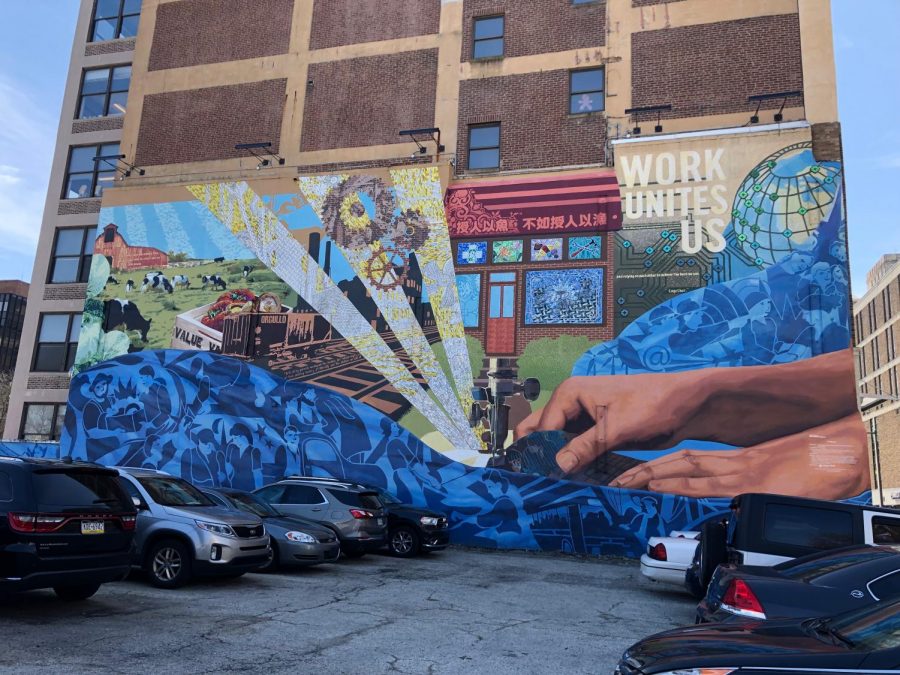Murals of Philly color the city
Photo Corinne Flaherty
“How we fish” mural in downtown Philly
“Start From Here.” “How We Fish.” “Pride and Progress.” These are the murals of Philadelphia, to name just a few. After walking around for a day, it is clear that the vibrant, meaningful art is what sets the city apart from other cities. Murals bring a pop of color, appearing frequently throughout all neighborhoods and often on the walls of parking lots.
The origins of modern graffiti have roots in Philadelphia with artists like Cornbread beginning the movement. As a child living in Philadelphia’s Youth Development Center, in order to stay away from the drugs and violence that had a growing presence in the community, Darryl McCray, known as Cornbread, began to sign his name on the walls of the city.
After his release from the developmental center, he partnered with artists Cool Earl and Kool Klepto Kid to tag the walls of the city. This inspired others, filling up the city’s walls with various names of other writers looking to be a part of the movement.
Graffiti became a vital part of the culture of Philadelphia throughout the 1960s and 70s. In 1984, the Mural Arts organization became a part of the Anti-Graffiti movement in Philadelphia, encouraging the community to be a part of the mural-making process rather than graffiti crowding the walls.
The organization behind the current murals is Mural Arts Philadelphia. According to muralarts.org, “Mural Arts Philadelphia is the nation’s largest public art program, dedicated to the belief that art ignites change.”
The goal is that art has the ability to transform public spaces, and consequently, individual lives. Between 60 and 100 public art projects are made each year, creating opportunities for adults and children to get involved in their community.
One specific mural that represents the power that art holds is “How We Fish,” which reflects the saying: “Give a man a fish and you feed him for a day. Teach a man to fish and you feed him for a lifetime.” In this mural, one can find quotes that bring attention to people’s concerns and dreams, along with what it means to be part of a community. One quote declares in big, bold letters that “work unites us.” Amid a sea of blue figures, another says: “Both of my parents worked at the factory. Our whole neighborhood worked at that clothing factory. It literally put the clothes on all of our backs.”
Yet another, which is painted on the side of a barn, claims that “work is more than making a living…it’s about seeing the value in what you do…it’s about growing.” Each speaks to the interconnectivity of work and how communities must rely on each other to be successful.
“You can definitely say that if you go somewhere else [murals] wouldn’t be there, so it is completely unique to Philadelphia,” one resident said. “It is a good way to reflect the culture of the city because it is incredibly old.”
The art adds another element of design to the brick and concrete architecture of Philadelphia. However, the murals are about more than just the bright colors and images—they express the rich history of the city’s past as well as the hopes for the future.

